Taekwondo 태권도Taekwondo Preschool
If you have any questions about Taekwondo 태권도 or any suggestions for Taekwondo Preschool, we'd like to hear from you. For frequently asked questions visit our Support section for some answers or please feel free to Contact Us ».
About Stance ( 서기 sogi )
Attention Stance ( 차렷 charyeot )
Beginner Tutorial Available
Attention is a stance ( 서기 sogi ) where your body is in an upright standing position with the legs side by side, heels touching, toes facing straight forward. Your hands should be parallel with your body, to the side. From this stance ( 서기 sogi ) instructors explain what will be taught during the class session and/or if they want your attention they say charyeot ( 차렷 ), meaning you stop whatever you are doing and get into the stance ( 서기 sogi ) awaiting further instructions. This is the stance ( 서기 sogi ) that all bows ( 경례 kyeong-nye ) come from.
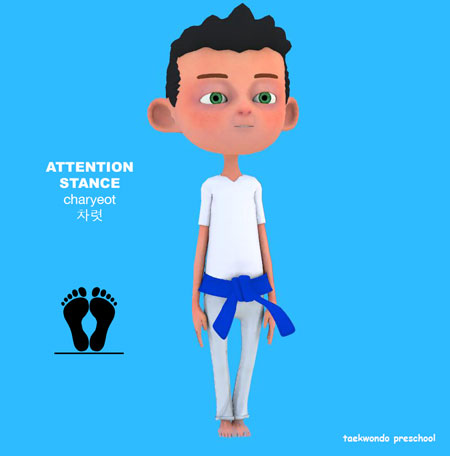
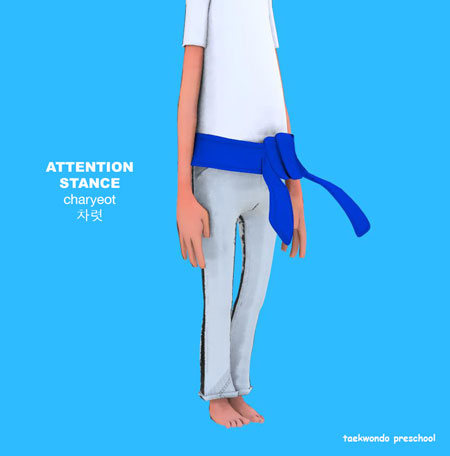
Ready Stance ( 기본준비 junbi )
Beginner Tutorial Available
Ready Stance ( 기본준비 junbi ) refers to the most common ready position used in taekwondo training. The stance ( 서기 sogi ) is performed by standing with the feet one foot-length from origin apart, measured from the inside edge or namely the Reverse Foot Blade ( 발날등 balnaldeung ) of the feet.
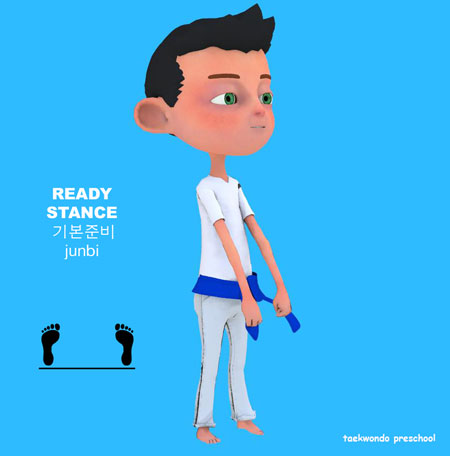
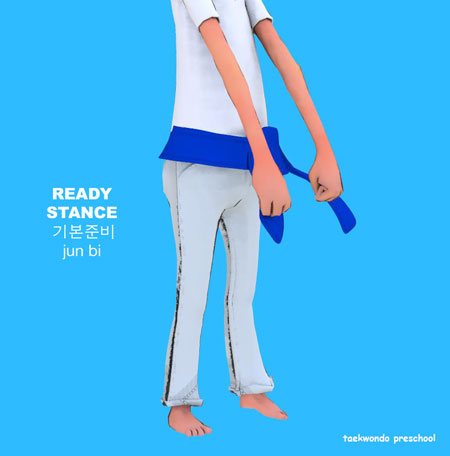
Walking Stance ( 앞서기 ap-sogi )
Beginner Tutorial Available
The beginner stance ( 서기 sogi ) is used to approach or retreat in combat and poomse. Feet should be maintained 3 foot-length from origin. To maintain a solid base, the front foot is facing straight forward and the back foot is 30 degrees to aid balance.
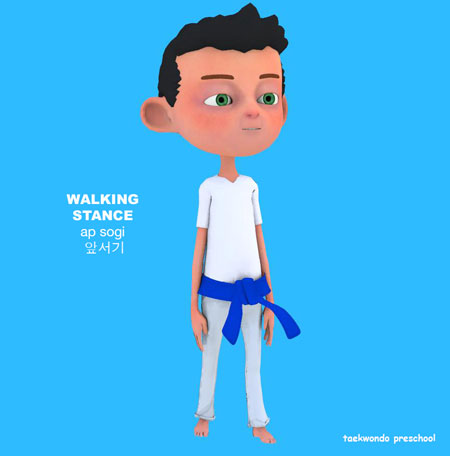

Front Stance ( 앞굽이 ap-kubi )
Beginner Tutorial Available
Front Stance ( 앞굽이 ap-kubi ) is a precursor of the fighting stance ( 겨루기준비 gyeorugi-junbi ) according to some authors. Body should be relaxed in this stance ( 서기 sogi ). From the attention stance ( 차렷 charyeot ) with feet together, one foot is placed straight ahead of the other. Depending on the martial art and style, some instructors teach to step sideways slightly when moving forward.
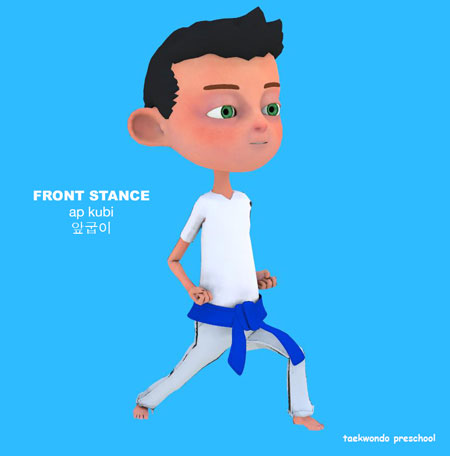
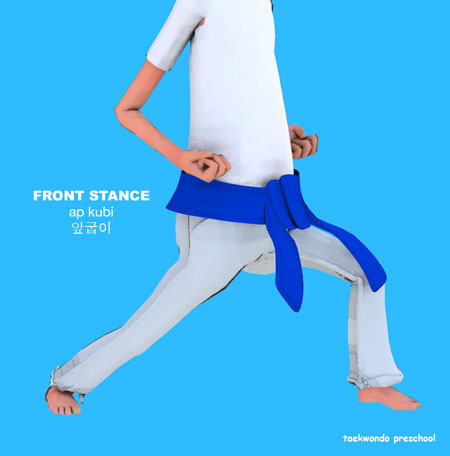
Back Stance ( 뒷굽이 dwi-kubi )
Intermediate Tutorial Available
This stance ( 서기 sogi ) is specifically focused on shifting weight to the back leg, as it offers much more control, and makes it easier to kick off the front leg. To perform the Back Stance ( 뒷굽이 dwi-kubi ), the body faces to the side, with the front foot facing forward and the front leg bent.
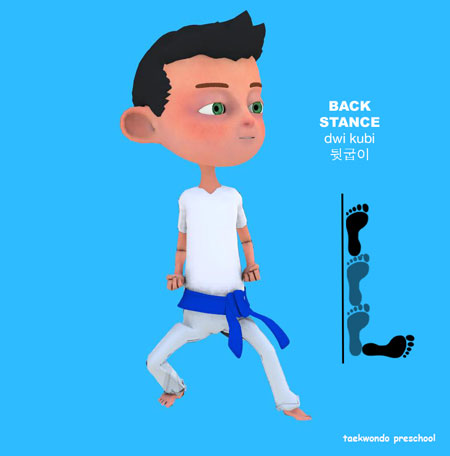
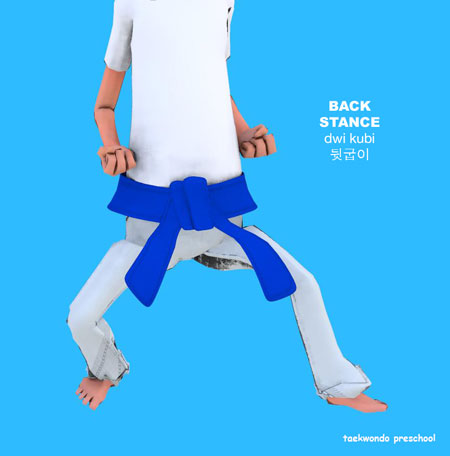
Horse Stance ( 주춤서기 juchum-sogi )
Beginner Tutorial Available
The Horse-Riding Stance ( 주춤서기 juchum-sogi ) is a beginner stance ( 서기 sogi ) generally used to practice punches ( 지르기 jireugi ) and blocks ( 막기 makgi ). It is similar to the ready stance ( 기본준비 junbi ) but the feet are placed much wider, about two-foot length's apart. Also, the knees ( 무릎 mureup ) are deeply bent and the shins ( 정강이 jeonggangi ) should be kept slightly perpendicular to the floor.
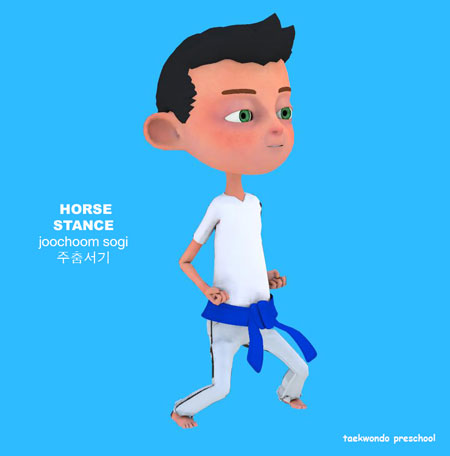
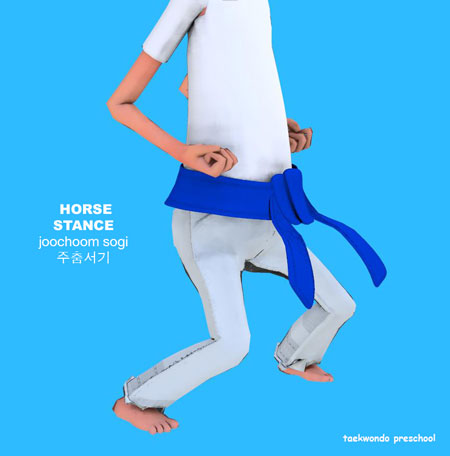
Cat or Tiger Stance ( 범서기 beom-sogi )
Intermediate Tutorial Available
Stand with your front foot facing forward and the back foot turned 30 degrees to the side, keep the feet quite close together for this stance ( 서기 sogi ). The knees ( 무릎 mureup ) should not spread apart. Shift most of your weight to the back foot around 90%, so the front foot is 10% and only for balance aid.
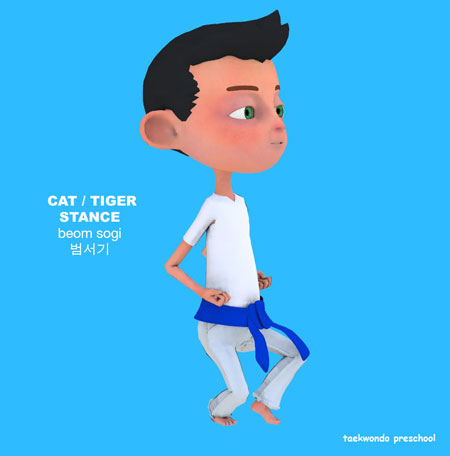
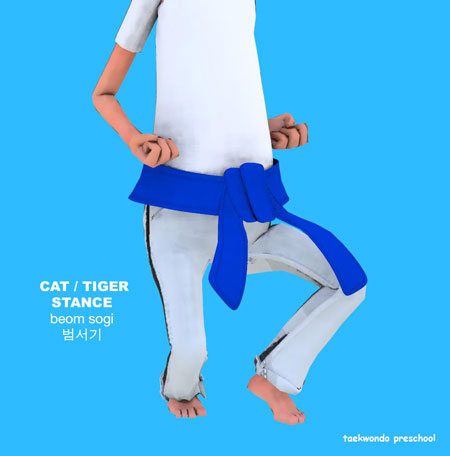
Forward Cross Stance ( 앞 꼬아서기 ap-koa-sogi )
Intermediate Tutorial Available
This stance ( 서기 sogi ) is used to quickly move sideways in which the front leg is supported by the ball of foot ( 앞축 apchuk ) of the back leg. Draw one foot sideways over the front of the other foot and place the sole of foot ( 발바닥 balbadak ) flat onto the ground.
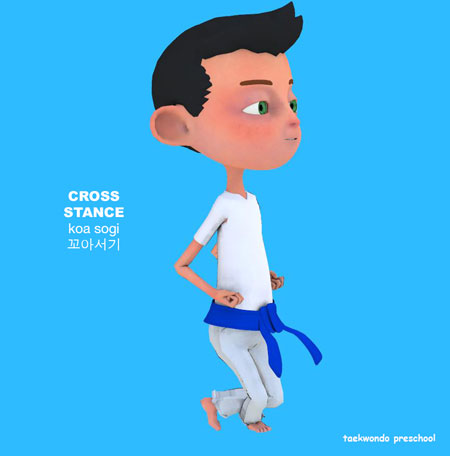
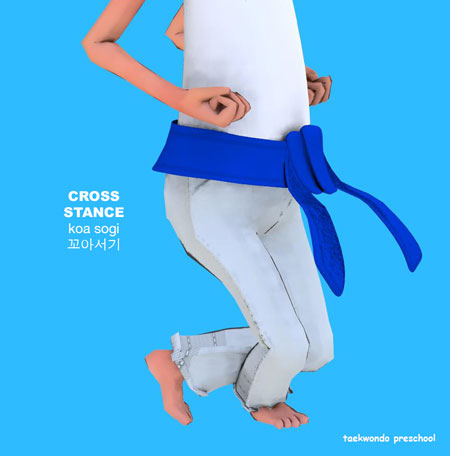
Side Stance ( 옆서기 yeop-sogi )
Intermediate Tutorial Available
For the Left Side Stance ( 왼 서기 wen-sogi ), pivot the left heel ( 뒤축 dwichuk ) 90 degrees to the left from a parallel stance ( 나란히서기 naranhi-sogi ). The right foot is facing straight forward. The stance ( 서기 sogi ) should be one foot-length apart and both legs are straight. The weight is evenly distributed on both legs and the center of the body should be in the middle.
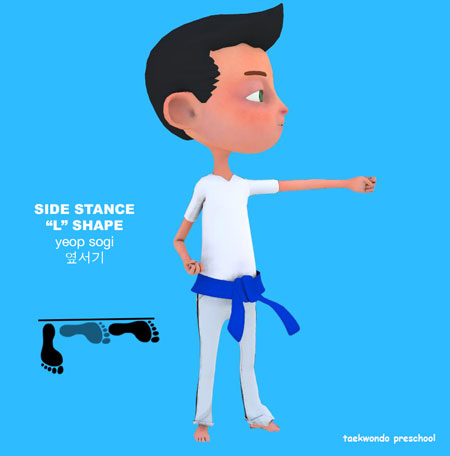
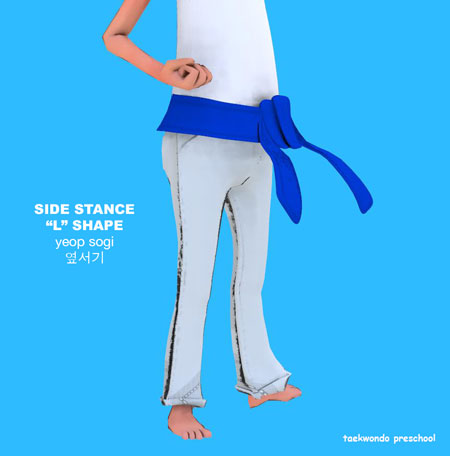
Parallel Stance ( 나란히서기 naranhi-sogi )
Beginner Tutorial Available
Stance ( 서기 sogi ) is performed by standing with the inner edge or namely the Reverse Foot Blade ( 발날등 balnaldeung ) of both feet about one foot-length apart and the toes are facing straight forward. The legs should be straight, eyes look forward, and the arms position will depend on the technique being used. In poomse competition, some deduction factors for this stance ( 서기 sogi ) are the foot-length is too narrow or too wide.
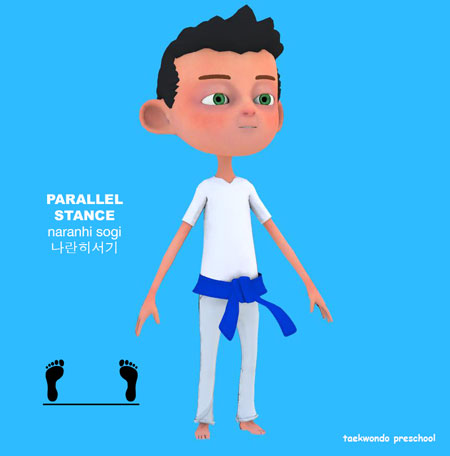
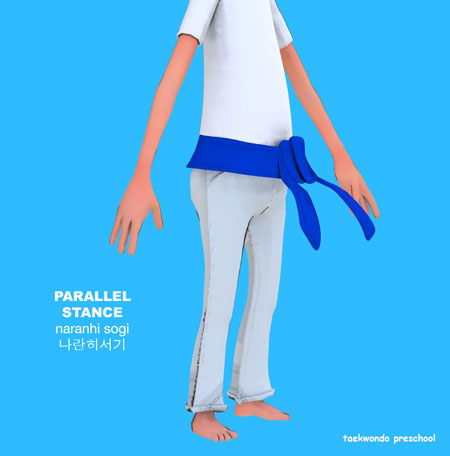
Covered Fist Ready Stance ( 보주먹준비 bojumeok-junbi )
Intermediate Tutorial Available
Covered Fist Ready Stance ( 보주먹준비 bojumeok-junbi ) is performed in an upright standing position with the legs side by side, heels touching, and the toes facing straight forward. Cover the right fist with the left hand and lift them up from the solar plexus to the target area.
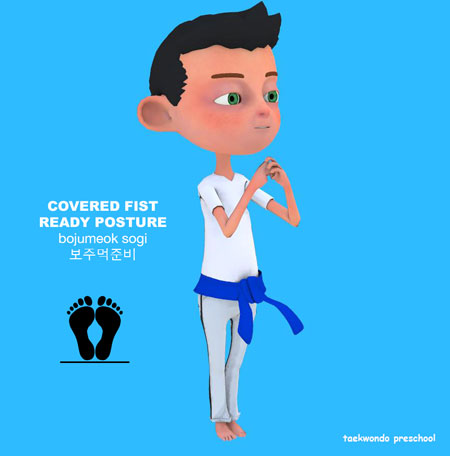
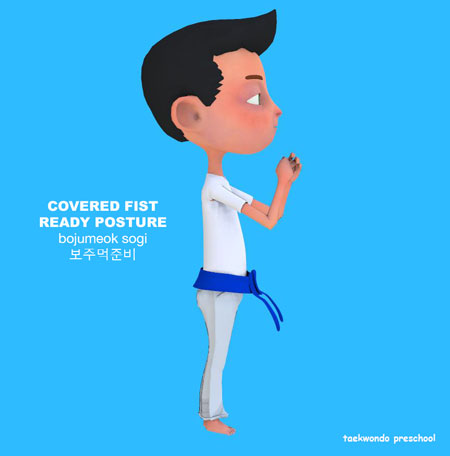
Crane Stance ( 학다리서기 hakdari-sogi )
Advanced Tutorial Available
Lift one foot ( 발 bal ) like a crane and place the Reverse Foot Blade ( 발날등 balnaldeung ) on the innerside of the other knee ( 무릎 mureup ) for this advanced level stance ( 서기 sogi ). Bend your knees ( 무릎 mureup ) and lower the body like a riding stance ( 주춤서기 juchum-sogi ).
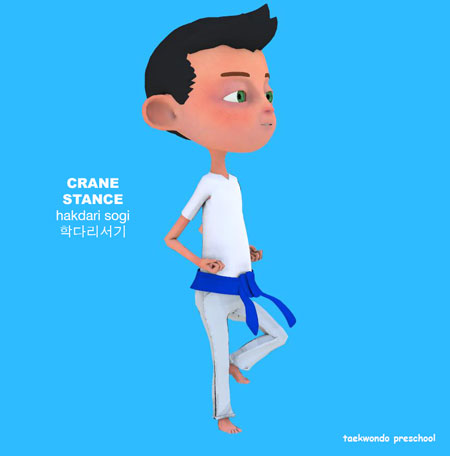
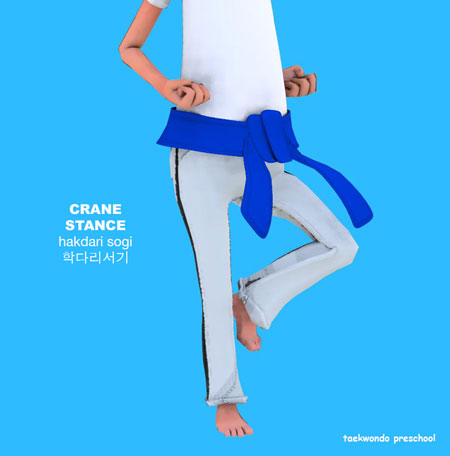
Fighting Stance ( 겨루기준비 gyeorugi-junbi )
Beginner Tutorial Available
This stance ( 서기 sogi ) varies with the martial art and practitioner, but is the basic all-purpose stance ( 서기 sogi ) used in sparring ( 겨루기 gyeorugi ), self-defense ( 호신술 hosinsool ), breaking ( 격파 gyeokpa ), and demonstrations. Common features across the arts include turning the body to the side to present a smaller target, slightly bent knees ( 무릎 mureup ) for balance and agility, feet about two shoulder widths apart, and hands up, protecting the head.
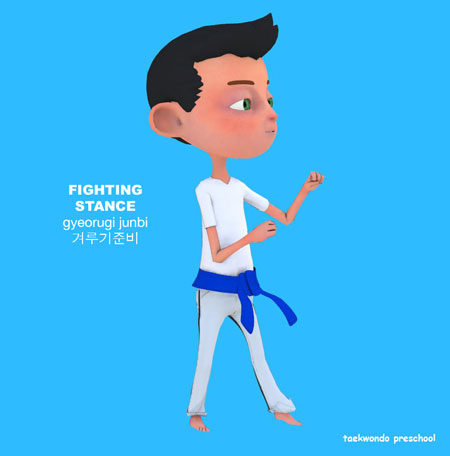
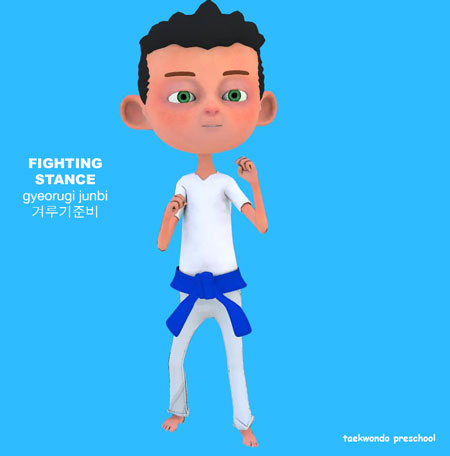
Overlapped Hand Posture ( 겹손준비 gyeopson-junbi )
Advanced Tutorial Available
This advanced stance ( 서기 sogi ) has both hands ( 손 son ) overlapped across each other in the shape of a cross. The left hand palm ( 손바닥 sonbadak ) is on top of the right hand. Leave about a fist size distance between the hands ( 손 son ) and lower stomach ( danjung / abdominal area ). The center of gravity is evenly distributed to both legs for this stance ( 서기 sogi ).
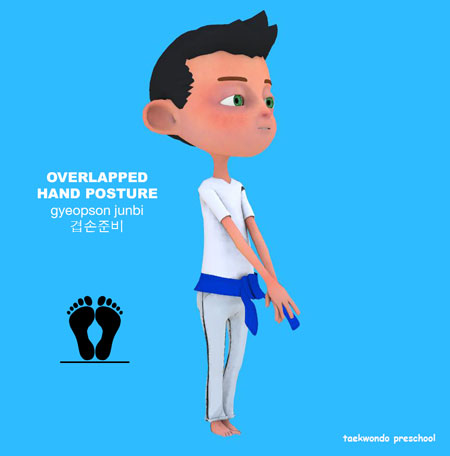
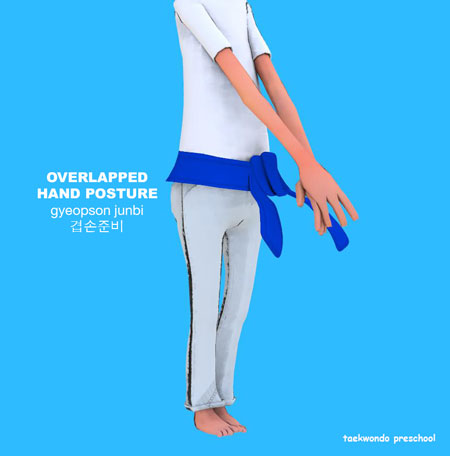
Log Pushing Posture ( 통밀기준비 tongmilgi-junbi )
Advanced Tutorial Available
This stance ( 서기 sogi ) has both hands appearing to push a log slowly with the two palms ( 손바닥 sonbadak ). You begin the movement by imagining that you are pulling a piece of log thats flowing on water toward your chest while you breathe in.
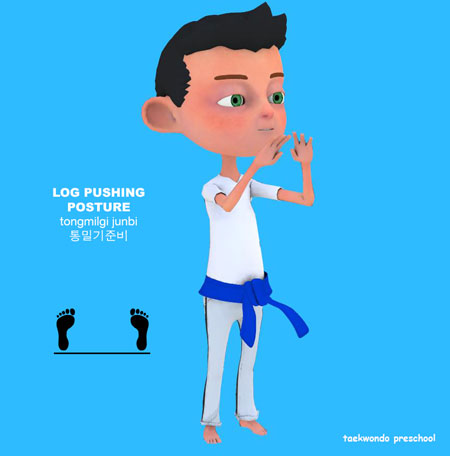
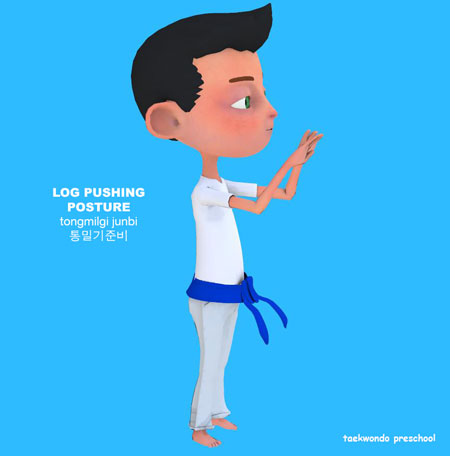
Two Fist Ready Posture ( 두주먹허리준비 dujumeok-heori-junbi )
Beginner Tutorial Available
This stance ( 서기 sogi ) has both hands making a fist ( 주먹 jumeok ) on the side of the waist. The center of gravity is evenly distributed to both legs at 50/50 ratio. Keep both legs straight and the toes pointing straight forward. From this stance ( 서기 sogi ) you are awaiting further instructions from the Master Instructor ( 사범님 sabeomnim ).
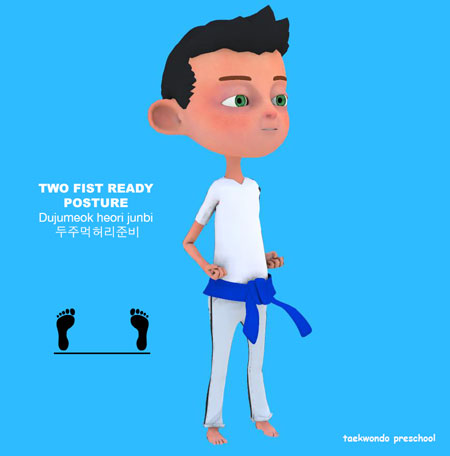
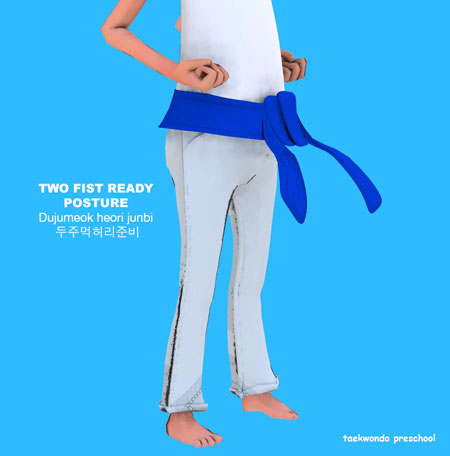
There are five tenets defined in the International Taekwondo Federation (ITF) and several more in World Taekwondo (WT).
Indomitable Spirit ( 백절불굴 baekjul-boolgool ): "To have indomitable spirit means to have the courage to stand up for what you believe in, no matter what odds you are up against, and to always give 100% effort in whatever you do." View Taekwondo Tenets »
RESOURCES
This article uses material from the Wikipedia article "Taekwondo Stances", which is released under the Creative Commons Attribution-Share-Alike License 3.0.








